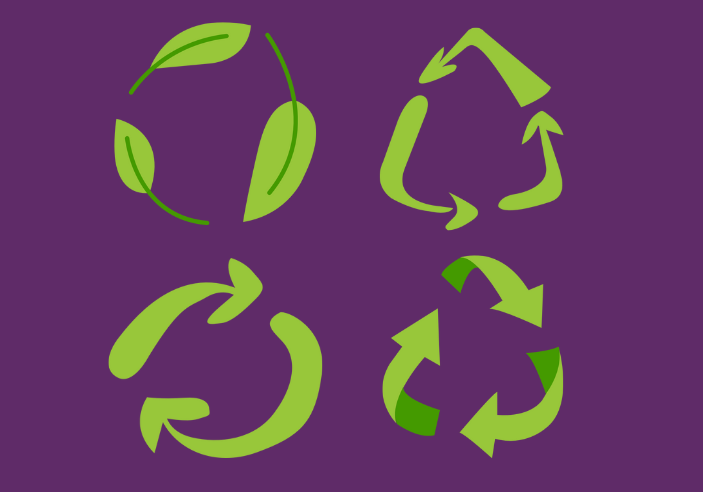Have you ever seen a product or a company that claims to be eco-friendly, but you have doubts about how true that is? If so, you might have encountered a case of greenwashing.
Greenwashing is a term that describes the practice of making false or misleading claims about the environmental benefits of a product. It’s harmful because greenwashing can confuse and deceive consumers who care about the environment and want to make more sustainable choices.
And it’s really important because greenwashing is everywhere. As many of us look to switch to sustainable alternatives, some companies seek to take advantage of our buying power, sometimes making it difficult to weed out the truly sustainable products from those who want to appear to be.
We all have an incredible power to make a difference, and part of that is how we spend our hard-earned money.
But How Did Greenwashing Come About?
The term was created in the 1980s when a surfer complained that a hotel was telling people to stop washing towels to be more eco when, in fact, it was purely to save money. And from those small beginnings it’s grown and, according to the CMA (Competition and Markets Authority) in the UK up to 40% of green claims could be misleading.
And this is not just a UK problem. Research in the EU found a similar amount of unverifiable claims and the UN now even have a greenwash tzar.
Greenwashing can be difficult to spot, and one of the challenges is that it can take on many forms.
Using vague or undefined terms, such as “natural”, “green”, or “sustainable”, without providing any evidence or explanation of what they mean can be an indicator that the product isn’t as green as it first appears.
Another way could be highlighting one positive aspect of a product or business, while ignoring other negative impacts on the environment or society.
Using green images or logos, such as leaves, trees, or animals, to create an impression of being environmentally friendly, even if the product or business has nothing to do with nature. Also using green or brown paper packaging and colours to make a product “feel” green when it’s what inside that might really count.
Some products or services claim to offset or reduce carbon emissions by paying for projects elsewhere, instead of taking action to reduce their own emissions at the source. This is an area of particular focus as offsets have proved controversial and don’t deal with the real issue, that carbon emissions need to come down.
Greenwash can be harmful for several reasons.
IT CAN
- Mislead people into buying products or services that are not as eco-friendly as they claim to be, and therefore waste their money and the time they spent finding something eco. It can also be demotivating for people who are trying so hard to be sustainable to find out that they’ve purchased something that does not fit with their values.
- Distract consumers from the real environmental issues and solutions that need their attention and support.
- Take business away from genuine eco-friendly products and businesses that are trying to make a positive difference.
So How Can You Spot And Avoid Greenwash?
Here are some tips from Giki’s greenwash checklist:
- Is it clear why the product is green. Vague terms and slogans are out, clear detail is in. Pepsi got in trouble with the Advertising Standard Agency because they had a “100% recycled” headline but then a little * which said essentially “well yes, apart from these bits that aren’t”. They were accurate, but not clear.
- Is it easy to find out more. For example, is there a website link to tell you more and on the website do they go into more detail. Creating green products is not simple and so they’re usually going to have to tell you more than they can fit on the back of a small package. Some companies like Patagonia are really good at this.
- Does the green claim cover the whole product. E.g. a product that comes in a nice cardboard box with recyclable packaging so it feels green but its’ been made from unsustainable materials and flown to you. This is not easy, but you deserve to have the full picture.
- Is it standard anyway? 100% plant-based apple, 100% recyclable cardboard, never airfreighted for a potato or no palm oil for products that don’t usually contain it. The company needs to have done something to be green.
- How are you going to dispose of it? End of life is important to how green it is e.g. a product that can only go to landfill and break down emitting chemicals is not going to pass the green test.
In all these cases certification labels can really help when they are independent such as the Soil Association for organic food, GOTS for cotton and many more.
When trying to avoid greenwashing, check the packaging for verified eco credentials like the BCorp logo, organic verification, one tree planted, plastic free, carbon neutral or carbon positive, and many more.
As regulators focus more on greenwashing, a few companies have got into trouble.
One of the biggest cases of greenwashing was by Volkswagen. The car manufacturer was found guilty of cheating on emissions tests by installing software that made their diesel vehicles appear less polluting than they actually were. This scandal affected millions of cars worldwide and caused significant environmental damage. In the US alone Volkswagen had to pay $14.7 billion to settle civil claims.
Oil giant, Shell, was also accused of greenwashing by Greenpeace for launching a campaign called “Make the Future”, which promoted renewable energy projects while continuing to invest in fossil fuels. Greenpeace argued that Shell was trying to distract from its role in causing climate change and human rights violations.
In 2023, Etihad Airways launched a series of ads claiming that the airline understood ‘the impact flying has on the environment’ and that they were taking a ‘louder, bolder approach to sustainable aviation.’ The imagery used in the advert had environmental connotations, such as a plant appearing from a Guest Miles card, and claimed they were cutting back on single use plastics. However, the Advertising Standards Authority (ASA) deemed these adverts were misleading for exaggerating the environmental benefits of flying with the airline.
And in 2022, a lawsuit was filed against H&M, accusing them of greenwashing with their Conscious Collection. These products were advertised as using less water to manufacture (compared with their traditional garment production), when in fact they had used more. The company claimed it was a discrepancy and result of technical issues. However, following the lawsuit, the UK Competitions and Markets authority also launched investigations into both ASOS and Boohoo sustainability claims.
Next, the CMA is looking at personal care so think soap, shampoos and laundry detergent where things like packaging are often given more airtime than the chemicals in the products themselves.
And finally Big Banks have also been in the spotlight and in particular HSBC. They used the slogan “Climate change doesn’t do borders. Neither do rising sea levels” but at the same time they’ve lent $145 billion to fossil fuel companies since the Paris Agreement. Not very green and not giving the complete picture to consumers.

